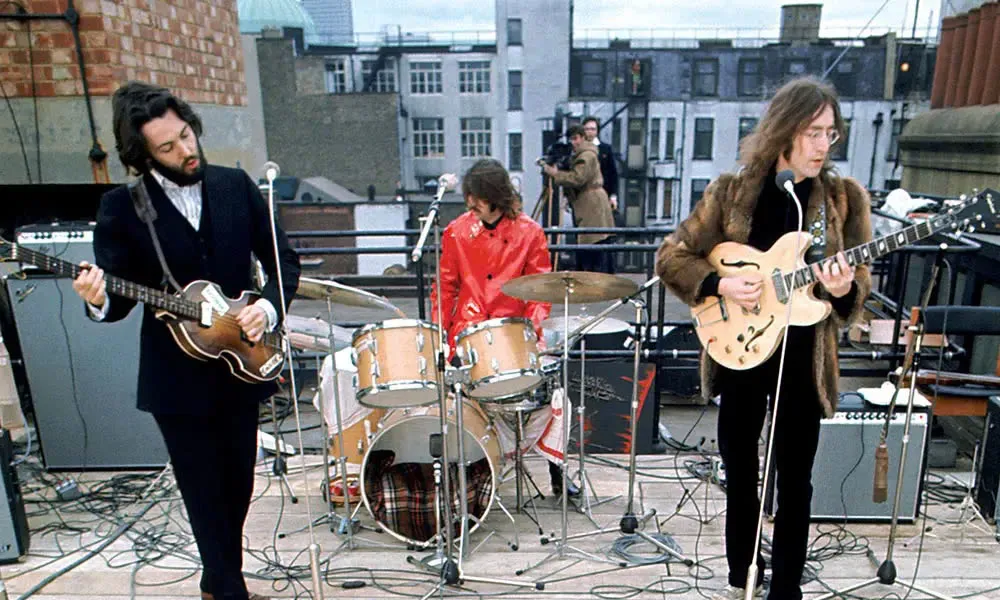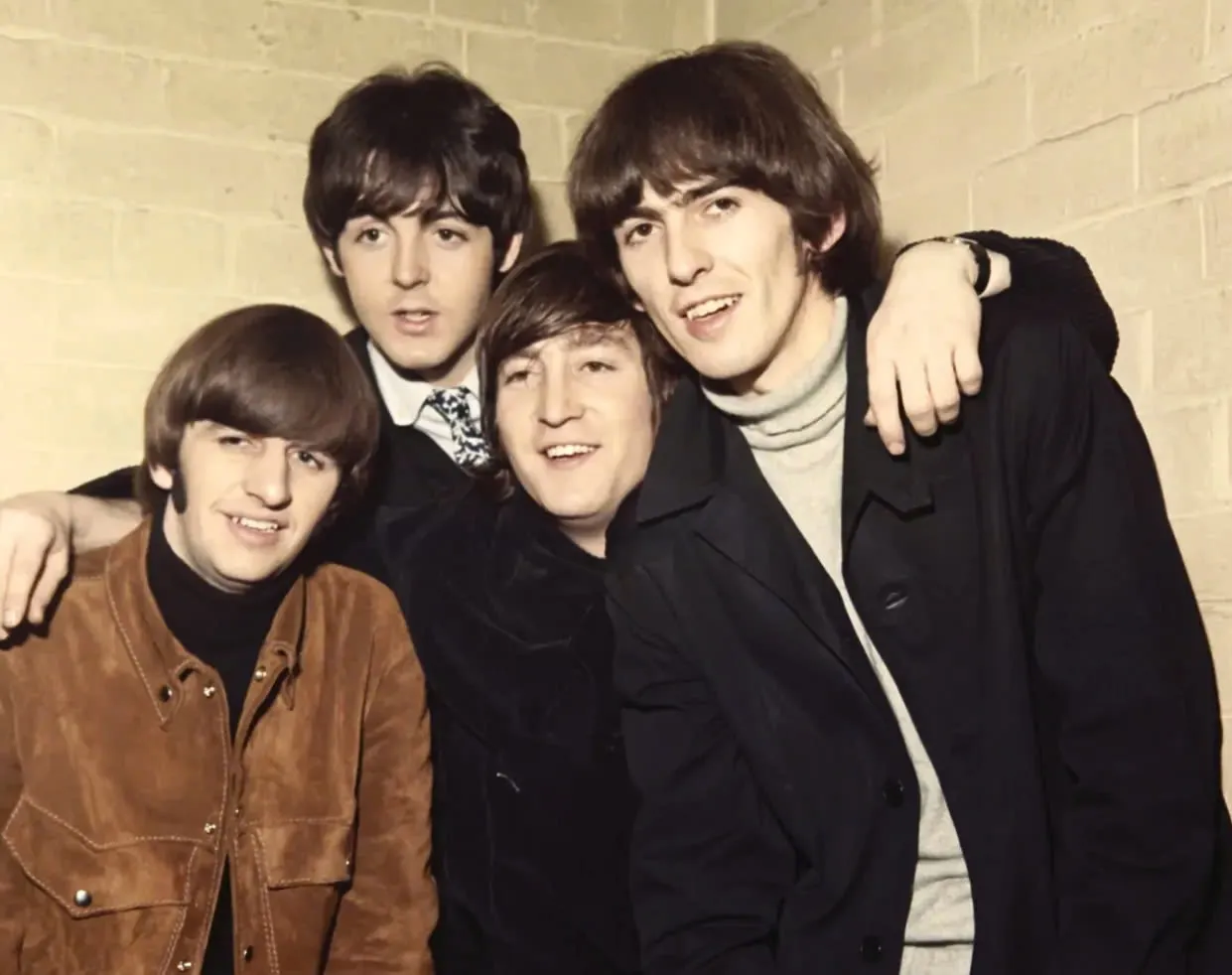The Beatles' rooftop concert, held on January 30, 1969, atop the Apple Corps headquarters at 3 Savile Row in London, is one of the most iconic performances in rock history. It was the last time the legendary band performed together live, marking the end of an era for not only The Beatles but also for the music world as a whole. The concert was part of the filming of the documentary *Let It Be*, directed by Michael Lindsay-Hogg, and was meant to be the culmination of the recording sessions for the album that would eventually become *Let It Be*.

The Context and Setting
By 1969, The Beatles were already established as the biggest band in the world. They had spent the 1960s revolutionizing music, fashion, and culture, moving from their early pop hits to more complex and experimental works. However, the band was also facing significant internal strife. The group had ceased touring in 1966, focusing on studio work instead, and by the late 1960s, the relationships among the members were strained. The pressures of fame, creative differences, and personal tensions were taking their toll.
The idea for what became the rooftop concert initially stemmed from a project that aimed to bring The Beatles back to live performance. The concept behind the *Let It Be* sessions was to capture the band rehearsing and recording new material, with the culmination being a live performance in front of an audience. Various ideas were floated for the location of this performance, including a boat, an ancient amphitheater in Tunisia, and even the Houses of Parliament. However, none of these plans came to fruition, and as tensions grew, the idea of a grand live show was abandoned.
Instead, The Beatles decided to perform an unannounced concert on the rooftop of their Apple Corps headquarters in central London. The spontaneity of this decision added an element of surprise and rawness to the event, which was very much in keeping with the spirit of the *Let It Be* sessions, which aimed to capture the band in a more unpolished and authentic state.

The Concert
On the chilly, overcast afternoon of January 30, 1969, The Beatles took to the roof of the building, joined by keyboardist Billy Preston, who had been a key collaborator during the *Let It Be* sessions. The band played for 42 minutes, performing nine takes of five songs: "Get Back," "Don't Let Me Down," "I've Got a Feeling," "One After 909," and "Dig a Pony."
The performance was a mix of energy, camaraderie, and spontaneity. Dressed in a fur coat (John Lennon), a red raincoat (Ringo Starr), and other winter clothing, the band braved the cold as they delivered what would become some of the most memorable live renditions of their songs. The concert captured the band at a unique moment in time—a last hurrah of sorts, where despite the interpersonal challenges, their musical chemistry was still palpable.
The concert wasn’t announced or advertised, so it was a surprise for anyone who happened to be in the vicinity. As the music started to drift down into the streets of London, crowds began to gather. People stopped in their tracks, peering up at the roof, trying to catch a glimpse of what was happening. Many didn’t even realize at first that it was The Beatles playing live above them.

The Reaction
The rooftop concert was as much an experiment as it was a performance. Given the band’s status, they could have easily drawn a massive crowd, but the decision to play unannounced made the event feel more intimate, almost clandestine. The reactions varied. Some people were delighted to be witnessing a live performance by The Beatles, while others were confused or annoyed by the disruption. The concert also attracted the attention of the police, who were called to address the noise complaints from nearby businesses.
As the concert progressed, the police made their way up to the roof, where they found The Beatles mid-performance. There’s a famous moment captured in the *Let It Be* film where the police are seen talking to the band’s road manager, Mal Evans, who tries to delay their intervention. Eventually, the officers insisted that the band stop playing, and the concert was brought to a close during the final rendition of “Get Back,” with Paul McCartney ad-libbing lyrics in response to the situation: “You’ve been playing on the roofs again, and you know your momma doesn’t like it…”
The Aftermath
The rooftop concert was the last public performance by The Beatles as a group. Shortly afterward, the band members returned to the studio to finish the *Let It Be* album, but by then, the writing was on the wall. The sessions were marked by discord, and shortly after the album’s release in 1970, The Beatles announced their breakup.
The footage from the rooftop concert became an iconic part of the *Let It Be* film, serving as a poignant reminder of the band's unparalleled energy and musical synergy, even as they were on the verge of splitting up. The image of The Beatles performing on a rooftop in London has since become emblematic of the end of the 1960s—a decade that The Beatles had helped define.

Legacy
The rooftop concert has been widely regarded as one of the most memorable moments in rock history. It has been referenced, parodied, and emulated countless times in popular culture. U2 famously recreated the moment for their music video for “Where the Streets Have No Name” in 1987, performing on a rooftop in Los Angeles.
In 2021, the rooftop concert was revisited in Peter Jackson’s documentary series *The Beatles: Get Back*, which offered a more in-depth look at the *Let It Be* sessions. The series provided a more comprehensive and nuanced portrayal of the band’s dynamics during this period, showing that despite the tensions, The Beatles were still capable of working together to create something extraordinary.
The rooftop concert stands as a testament to The Beatles' enduring legacy. It was a performance that encapsulated the spirit of the band—innovative, daring, and deeply connected to their audience. Despite the personal and professional challenges they were facing, The Beatles' rooftop concert remains a powerful symbol of their final act together, a moment where they returned to the raw energy of live performance, if only for a brief time. This impromptu, unorthodox concert was a fitting end to the live career of a band that had always pushed the boundaries of what rock and roll could be.

